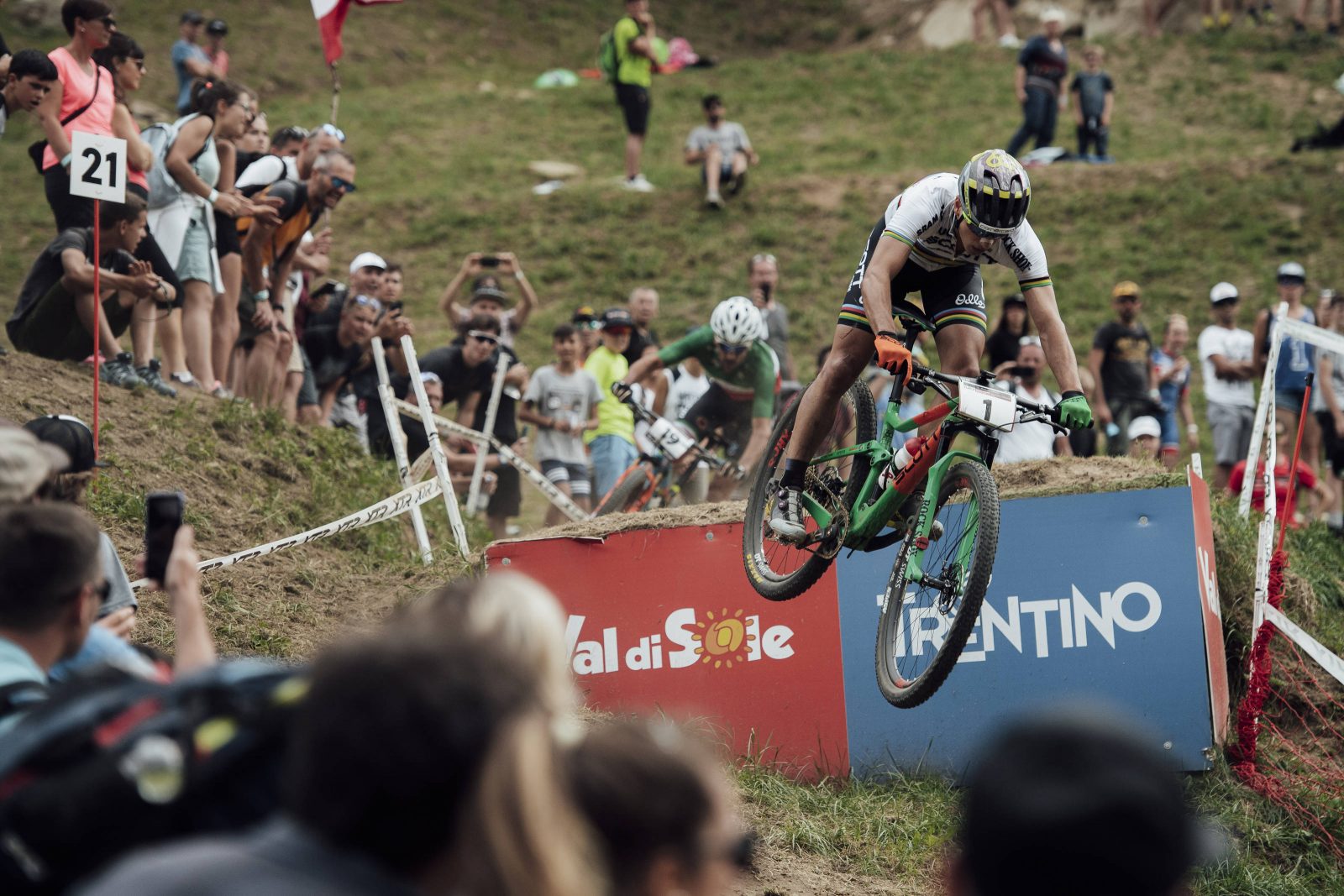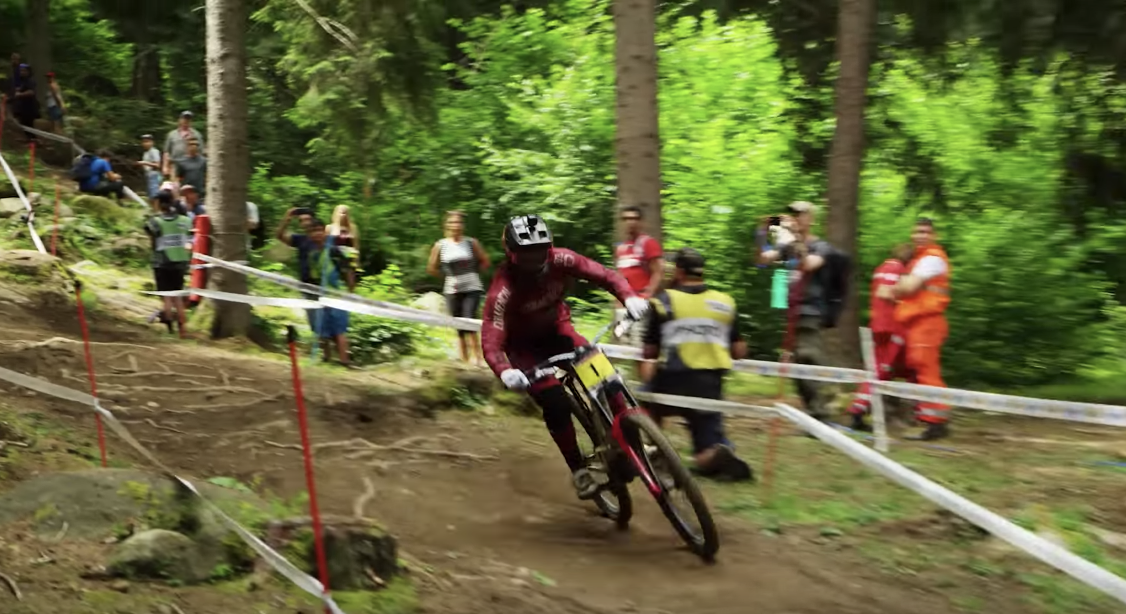We’ve ridden lots of different gear and bikes over the years, and what seems to always circle back around, is the question of what’s the best kneepad. We’ve rounded up seven pads, by all means not the full array on the market, and we’ll be presenting the characteristics of each.

What makes a good pad? Is it comfort? Durability? Coverage? We feel it’s a mixture of every single thing that comes to mind. If it’s an X-Games pad from the 90’s, you could slide down a jump landing and likely walk away, but can you pedal with it? The knee warmer-esque slide on pads such as G-Form, have a great technology, but can they really save you from a sharp rock? Find our video overview of the seven pads below.

G-Form Pro X
The G-From brand surged into the industry a few years ago, popping up in bike shops, and being presented to customers as ultra comfortable, perfect for kids, wearable under (and yes, also over) pants.
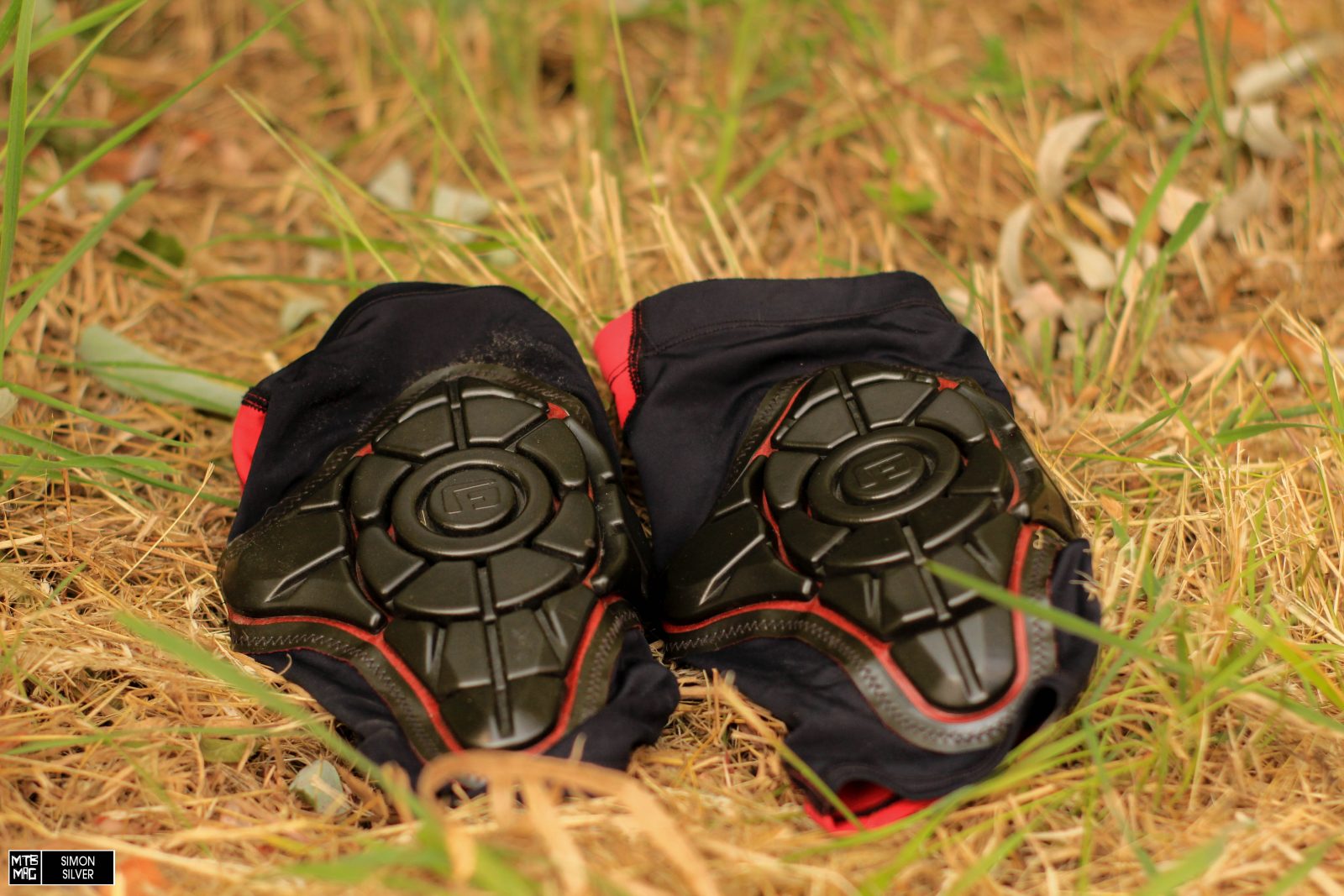
Comfort: The Pro X pads are comfy, let’s face it, it’s not like there’s a whole lot there. The fabric is reasonably soft, and doesn’t get too hot.
Durability: The pads we rode in have seen quite a few days under pants at the jumps, as well as many trail rides. So far other then a few minor abrasions, everything is intact and working well.
Protection: The RPT (rate-dependent technology) boasts the properties of staying soft and flexible until impact, this is true of the Pro X pads, though the indentations between padding would be detrimental if a rock or root got in there. The pads also have a tendency to slide/stretch a bit upon impact.
Aesthetics: The G-Form Pro X pads have a bit of an unconventional look, with a futuristic design, they could be from a Star Wars character’s outfit. We thought they fell more accurately into the Teenage Mutant Ninja Turtle’s wardrobe.
POC System VPD
A trail oriented offering from the legendary Swedish brand.
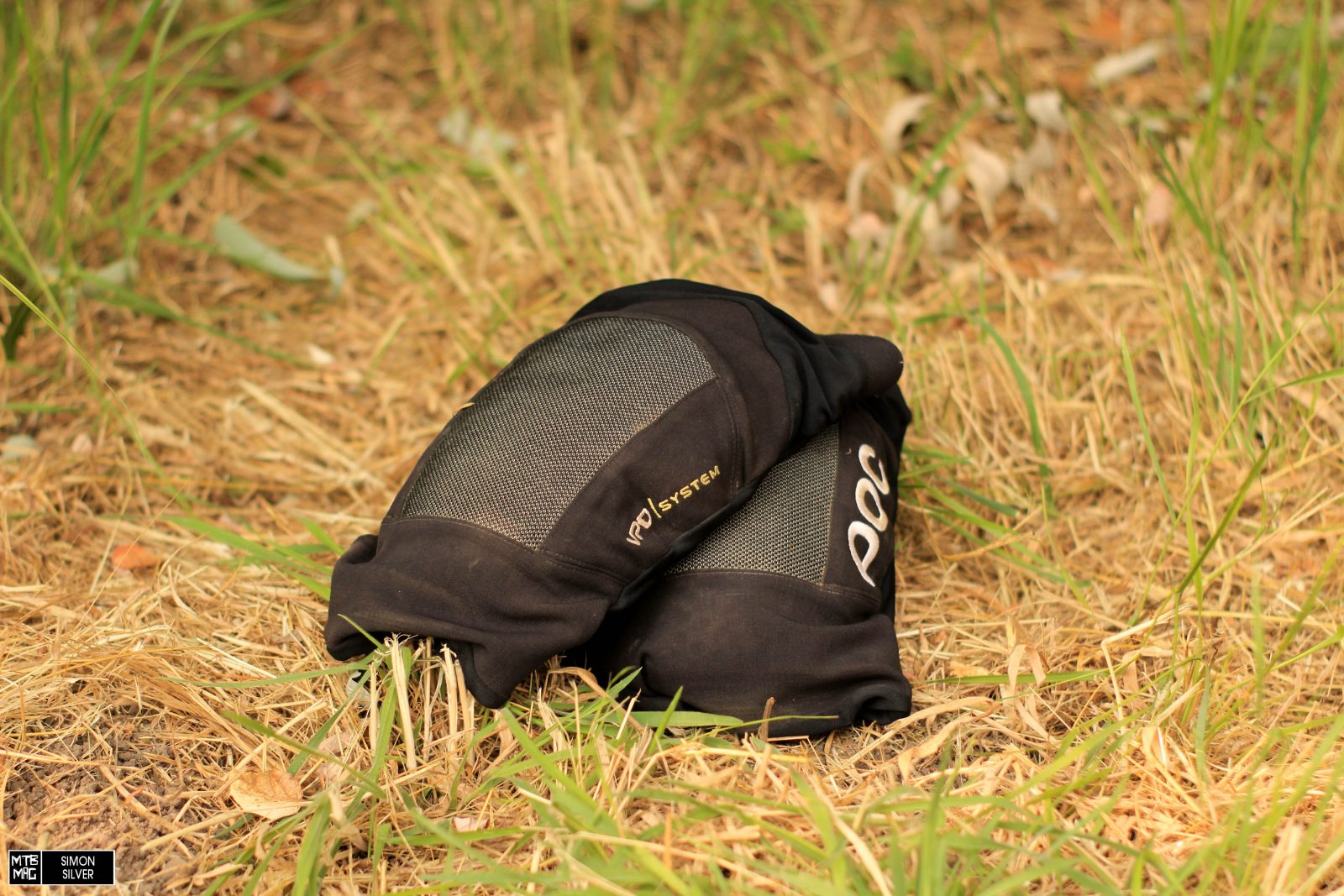
Comfort: The POC VPD System pads are the most comfortable pads we’ve ever ridden in. The fabrics used are “high-tenacity polyamide yarns for low friction and high abrasion resistance” The material remains soft when wet, and does’t bunch up behind the knee.
Durability: The System VPD has gone through a month long European trail bike trip, some downhill shuttles and more. The front of the pad has seen some direct impacts, but has yet to show any of them.
Protection: The coverage of these pads, vertically speaking is a bit short, good for lots of pedaling, not for added protection. Side to side, the pads provide adequate coverage and make the knee feel fully encompassed. The one downside about the pads is a slippery fit, it doesn’t take much to slide the pad around, and in a crash scenario, could be very bad. The easy movement could be a sizing issue, and we simply have a larger pad then we do knee.
Aesthetics: The System’s have a clean black only color-way, and look quite clean and elegant to us, thumb up for POC’s designers.
Dakine Hellion
The bike park bound weekend warrior’s pad of choice.

Comfort: The Dakine Hellion pads are meant for going downhill, that being said, they should still be comfortable right? While the fit of these pads is okay, the fabrics are not the best feeling to the skin, and after hours of DH, especially under pants, these pads will leave some marks.
Durability: These pads have been used in the Whistler Bike Park, and seen plenty of DH racing. The front of the pad is a bit scraped up, but all things considered, the stitching is still intact, and there’s been no blow outs.
Protection: The pads offer great coverage, and a safe feeling layer of AriaprenePro foam, which basically is more protective, yet lighter weight then your average padding.
Aesthetics: The Hellion’s feature a cool black and grey graphic, and carry what we feel is the traditional knee pad look, which isn’t a bad thing.
Dakine Slayer
The newest trail bike offering from Dakine, a slip on, weight conscious and well vented knee pad option.

Comfort: The Slayer pads are easy to get on and feel reasonably comfortable. The pre-curved fit takes things quite far in the sense the when you’re standing, there’s a huge bulge in front of your kneecap. While pedaling, the curve is more welcome, but it likely doesn’t need to be as accentuated. The open back of the pads helps with ventilation and comfort.
Durability: The Slayer pads have held up well, and not one stitch has come undone, which is always a good sign. the graphics, have started to peel back a bit, but thats only a visual issue.
Protection: These pads have a great length of material, extending above and below the foam itself, we like this, as it’s helpful if you miss a pedal, or tag underbrush.
Aesthetics: The Slayer’s, other then a sweet model name, carry a stealthy look, and blend in well with most riding gear.
Fox Launch Enduro
The slim and good looking pad from Fox, is it enough?
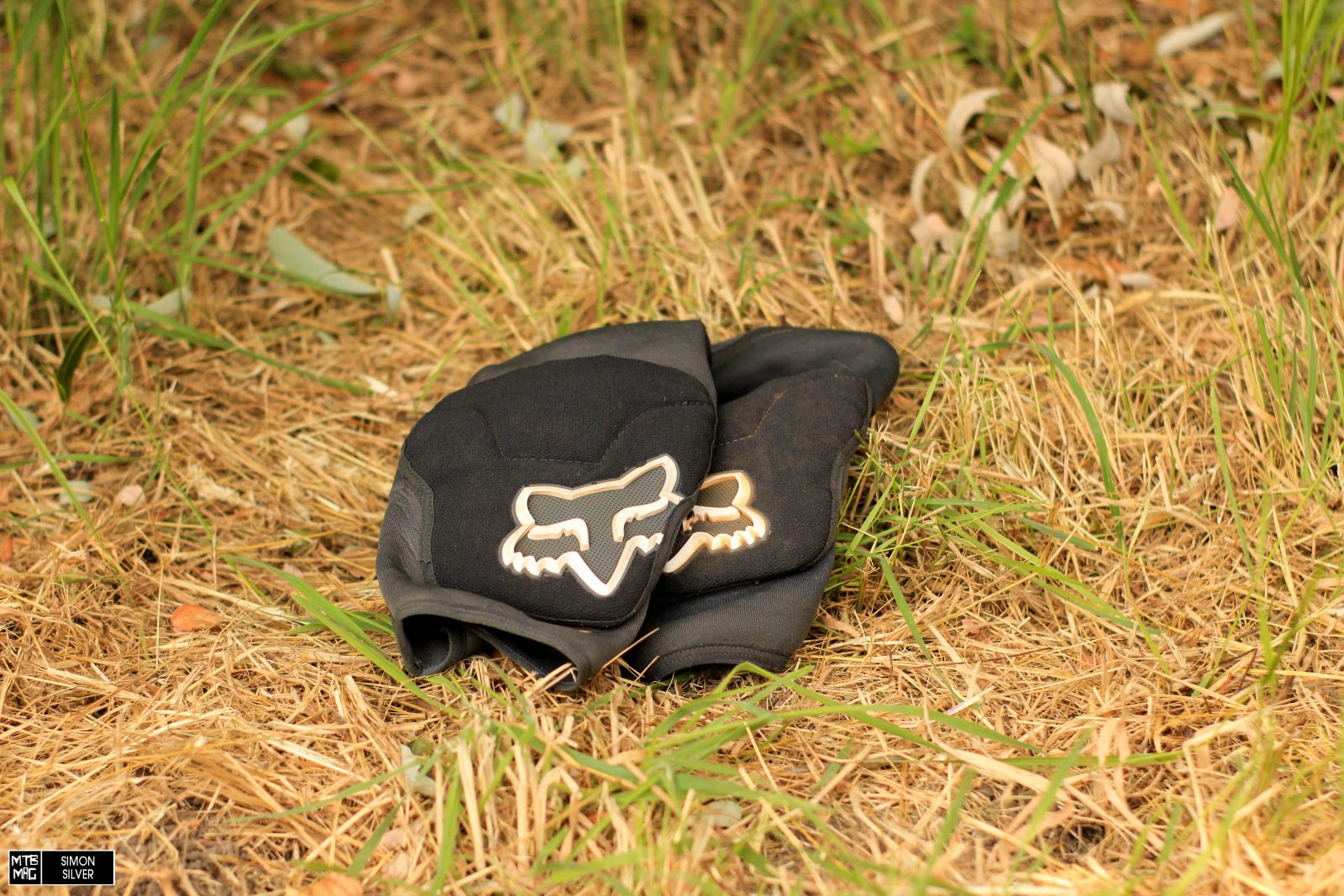
Comfort: The Launch Enduro pads are easy to get on, and are built out of comfy neoprene panels. The pads vent well, and feel good on the skin even when you’re sweaty.
Durability: The pads have seem some crashes, the front logo on the left pad is scraped off, but the seams are holding strong, and the washing machine doesn’t do any damage.
Protection: What we liked about the Launch Enduro pads is the tube like structure. The knee area is protected 360° and though there is more padding in front, the neoprene provides a few millimeters more of protection around the sides and back of the pad then other models. The pads are not going to do well in a sharp rock scenario, but for trail riding where we live, they’re perfect.
Aesthetics: A slate grey look, and nothing too bold as far as graphics, make these pads a solid contender.
Fox Launch Pro D3O
The Launch Enduro’s bigger brother, with a removable hard cap. Freeride pads that can take a hit.

Comfort: The Launch Pro pads are well fitted to the curve of our knees, and they share the same Ariaprene neoprene as the Launch enduro pads. The ventilation is as good as you could expect from a pad with a hard shell front.
Durability: These pads are built for higher consequence riding, and can take the abuse. The front shells are scratched up, but still work just fine, and the stitching is still intact.
Protection: We’ve seen some gruesome photos over the years of rocks plus soft shell pads, and so the hard front provides some piece of mind. Good wrap around coverage is present, and the length is just right.
Aesthetics: The Launch Pro’s design conveys that it means business. The plastic front cap isn’t too bulky, and the upper and lower straps keep the pads in place.
7iDP Transition Knee
The 7iDP Transition pads are the best all around, and noticeably well fitting pads we’ve used recently.

Comfort: The Transition pads are the longest pads we’ve ridden, with rubber non slip bands keeping things taut. They have a compression fit, and the foam molds to your knee with heat. Worth noting is if you live in a cold region, these pads may not get warm enough to feel fully comfortable. The 4-way stretch mesh maintains airflow behind the knee.
Durability: High quality stitching ensures things aren’t falling apart, and we’ve yet to rip or tear any part of the pads.
Protection: We love the coverage of the Transition pads, a bit more on the sides could be useful, though thats the key feature on the new Sam Hill edition’s which we’re excited to try out. We feel the thickness of the pad is perfect for most trail bike applications.
Conclusion
The POC Joint VPD is the most comfy pair of pads we’ve used, the Fox Launch Pro’s are great for heavy duty riding, and the 7iDP Transition pads are the best all around trail model, with the Dakine Slayers close behind. Knee pads are a very personal item, and we’d highly encourage everyone to try on pads first before buying.
For more info visit: POC, 7iDP,G-Form, Fox, Dakine

